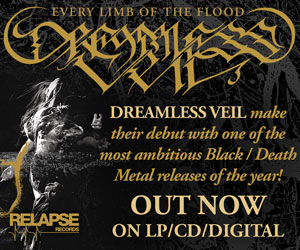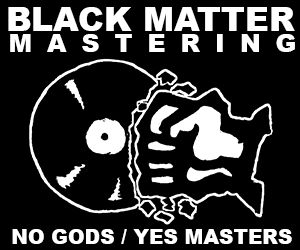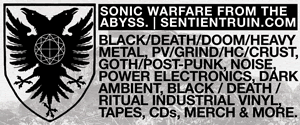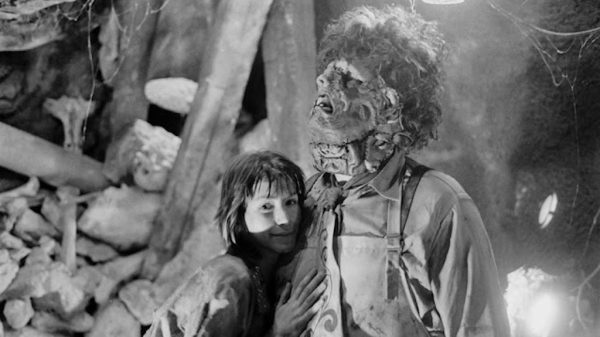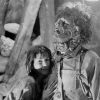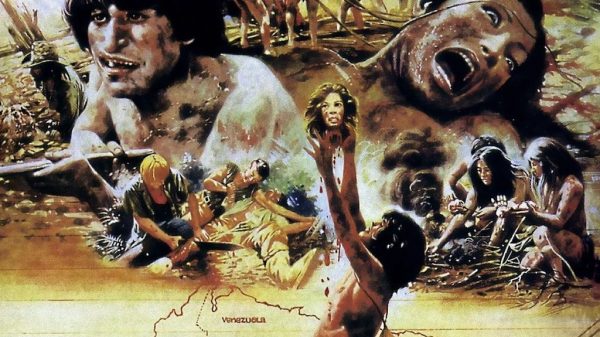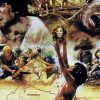Modern Gothic books and films are brilliant. They dive into unfamiliar subject matter, turn old tropes on their heads, and give us something new and inventive to get our teeth (fangs) stuck into. However, who doesn’t love a classic? They’re timeless, by their very nature. Dramatic landscapes, doomed love stories, deeply human fears — they’ve left their mark on every medium imaginable. And, when a story’s good enough, it doesn’t just stick — it evolves. These particular tales have found their way into new realms: film, music, and even games. Let’s take a look at how some of the most iconic Gothic classics have inspired retellings in other mediums.

Dracula by Bram Stoker
No surprises, we’re starting with Dracula. Bram Stoker’s 1897 masterpiece isn’t just a Gothic tale, it’s the Gothic tale. It’s pretty much impossible to overstate its influence. The presence of vampires was nothing new, but this telling of the story was groundbreaking. The shadowy Count, his crumbling Transylvanian abode, and the whole neck-biting thing? It’s woven into pop culture’s very fabric.
Bela Lugosi’s turn as Dracula in the 1931 Universal film cemented the character’s suave, sinister image. Lugosi gave us the Dracula we think of today — impeccably dressed, hypnotic, and just terrifying enough to keep you enthralled. And that allure isn’t just confined to film.
Take Immortal Romance, for example. This wildly popular online slots game takes cues from Stoker’s dark world, blending Gothic themes with tales of forbidden love and eternal secrets. Its haunting soundtrack and atmospheric storytelling feel like a modern tribute to Dracula’s eerie legacy. It’s sultry and seductive, with a slots twist (and fewer stakes to the heart).

Frankenstein by Mary Shelley
Rather than being a true horror story, Shelley’s Frankenstein is a story of hubris and rejection. The experiment to create life didn’t just unleash a monster, it sparked two centuries of adaptations. Each of them, in one way or another, grappling with the tricky subject matter of what it means to play God.
James Whale’s 1931 film adaptation, starring Boris Karloff, gave Frankenstein’s creature a face and, crucially, a heart. Karloff’s performance, all anguish and longing, showed that the monster wasn’t really the monster at all. That sympathetic lens has carried through many further adaptations, from somber retellings to Frankenstein-inspired narratives in everything from sci-fi to gaming. Even the Simpsons had a crack at it with the Frinkenstein episode!
Wuthering Heights by Emily Brontë
You can debate all you like about whether Wuthering Heights is a Gothic classic, but for me, it ticks the boxes. It’s got the landscape (windswept moors), the spook factor (ghosts… sort of), and obsessive love. This 1847 novel might not be the first thing you think of as gothic, but it fits all of the stereotypes. Heathcliff and Cathy’s destructive passion makes for the kind of drama you can’t look away from, even as everything falls apart.
But the real magic of Wuthering Heights? It’s how it inspires people to take its Gothic essence into entirely new mediums. One such person is the brilliant Kate Bush. This classic inspired the ethereal song Wuthering Heights — the perfect example! Cathy’s lament, Brontë’s haunting landscape, and raw emotional turmoil distilled into four unforgettable minutes. It’s Gothic romance at its purest and most beautiful, set to the timeless voice of Kate Bush.

The Strange Case of Dr. Jekyll and Mr. Hyde by Robert Louis Stevenson
Often the best Gothic writings tap into something chillingly universal. Dr. Jekyll and Mr. Hyde does just this — it exemplifies the idea that our darker selves aren’t separate from us, they are us. Jekyll’s experiments (that are meant to purify his soul) end up unleashing Hyde, a violent, unchecked version of himself. We’ve all felt our own version of Hyde bubbling under the surface at moments. That’s what makes this book so special, so universal.Adaptations of Stevenson’s novella range from chilling to bizarre, but one of the most unexpected is Jerry Lewis’s The Nutty Professor (1963). This film swaps out horror for comedy, but cleverly keeps the core idea of duality. Watching the shy, bumbling professor turn into the arrogant Buddy Love is a reminder that our hidden selves might not always be monstrous — but unfortunately, they’re rarely who we want them to be.


